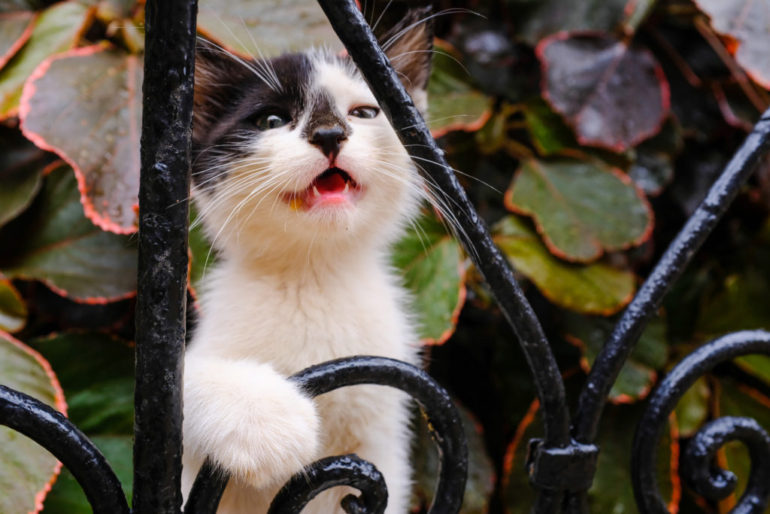While eating dinner on a cafe terrace, I suddenly felt something graze across my leg. I looked down to find two large eyes peering at me: a cat eagerly waiting for me to drop a piece of food, hungry for what was left of my chicken bone.
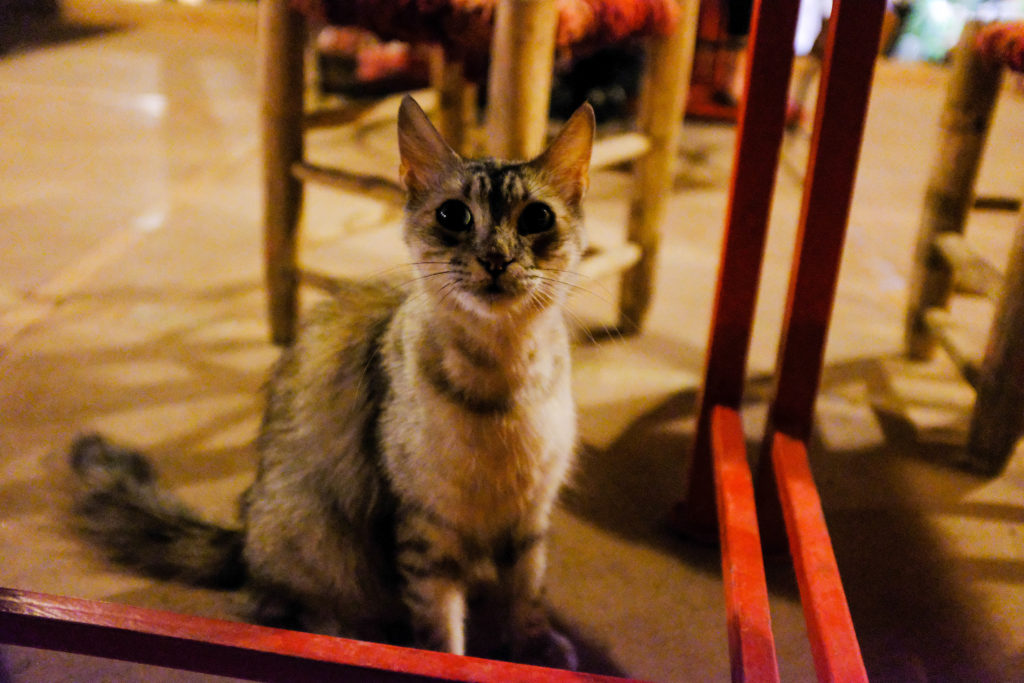
It was the restaurant’s cat—not formally, but simply because it showed up there every evening for scraps.
Pet ownership is loose in this country. Farmers allow kittens to rest between their produce; shop owners leave milk and bread outside for their regular felines.
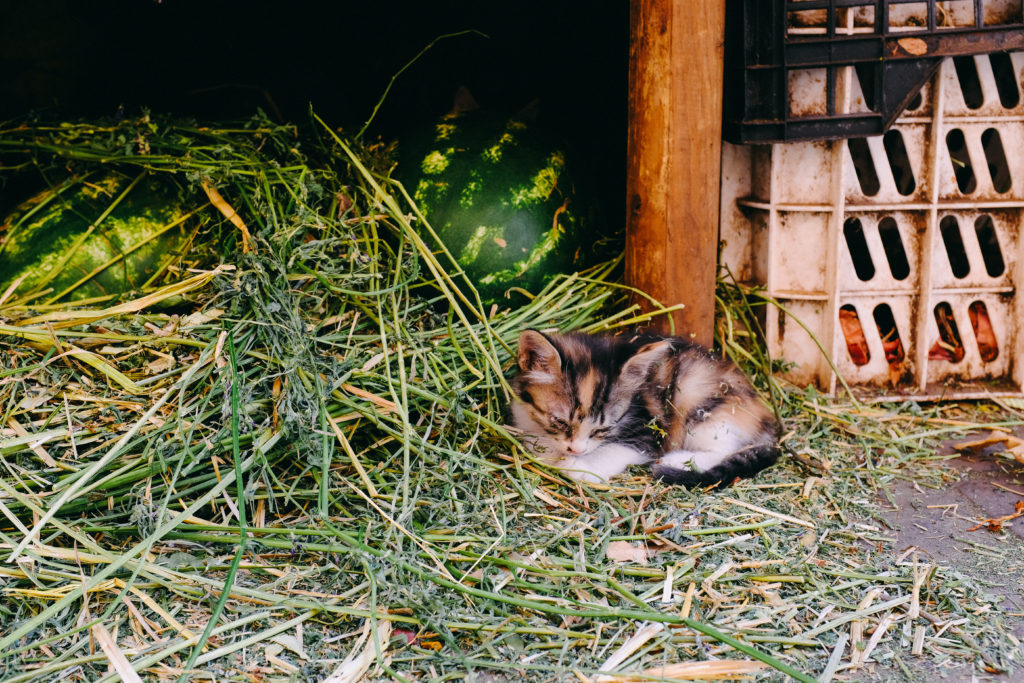
Cats are all over the place: slinking across rooftop gutters, sunbathing in narrow pathways, languidly eyeing passing tourists.
Why are there so many? One explanation is that neutering isn’t a common practice here; there are some religious reasons against it, but it’s also just not a priority in terms of how money and time is spent. As a result, the numbers of kittens aren’t controlled—they just keep growing.
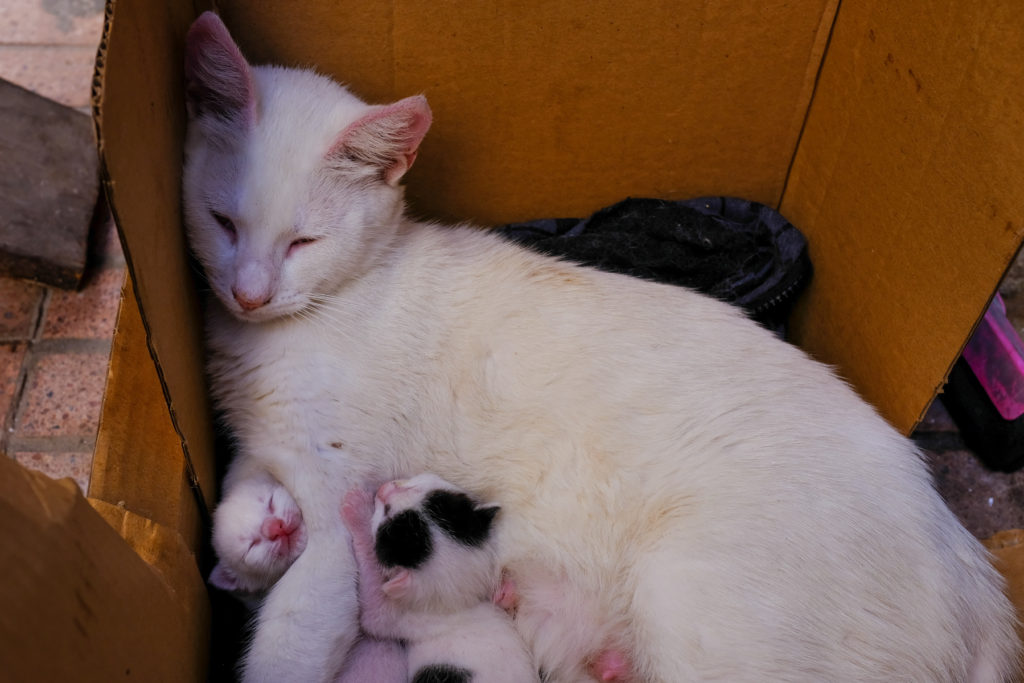
While the streets are their home, many of the cats live in makeshift shelters provided by locals. They rest in baskets and crates, cardboard boxes, wooden cat houses—anywhere they find comfort.
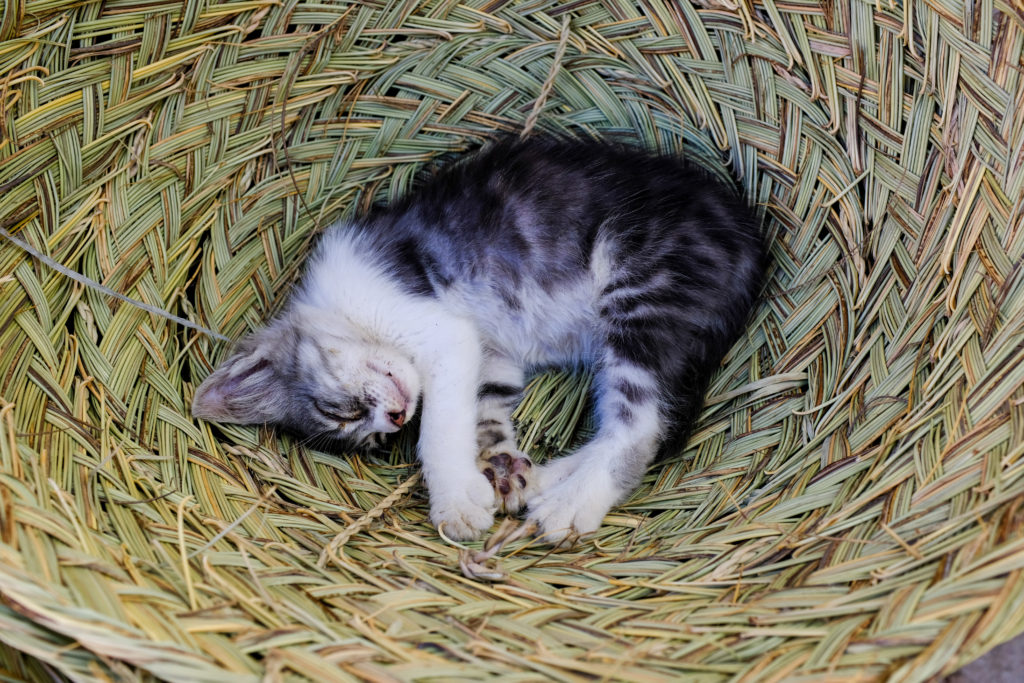
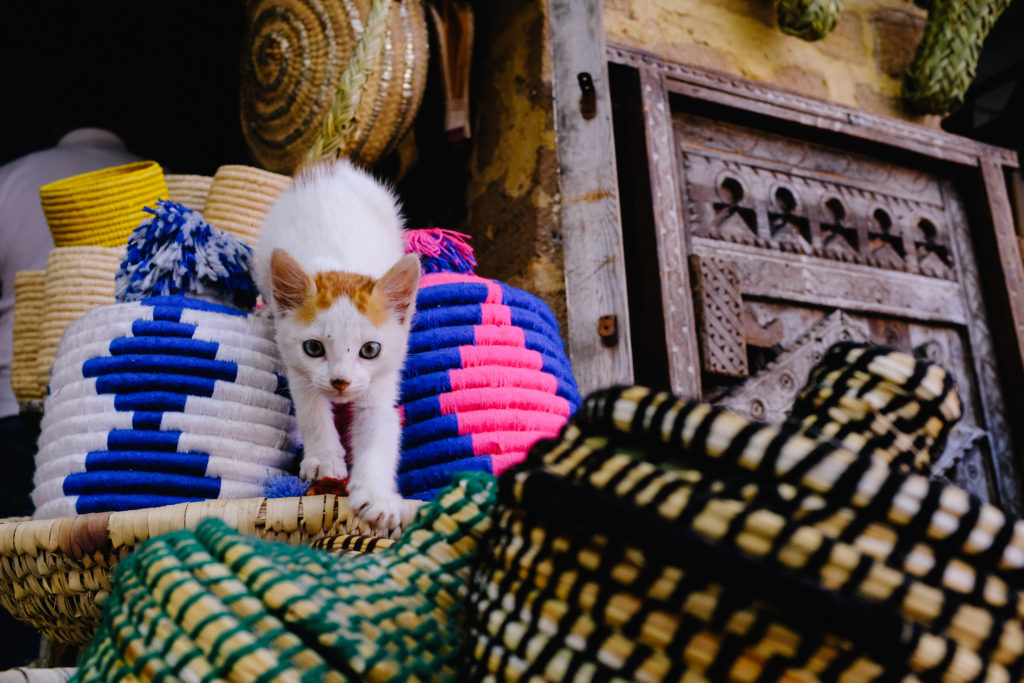
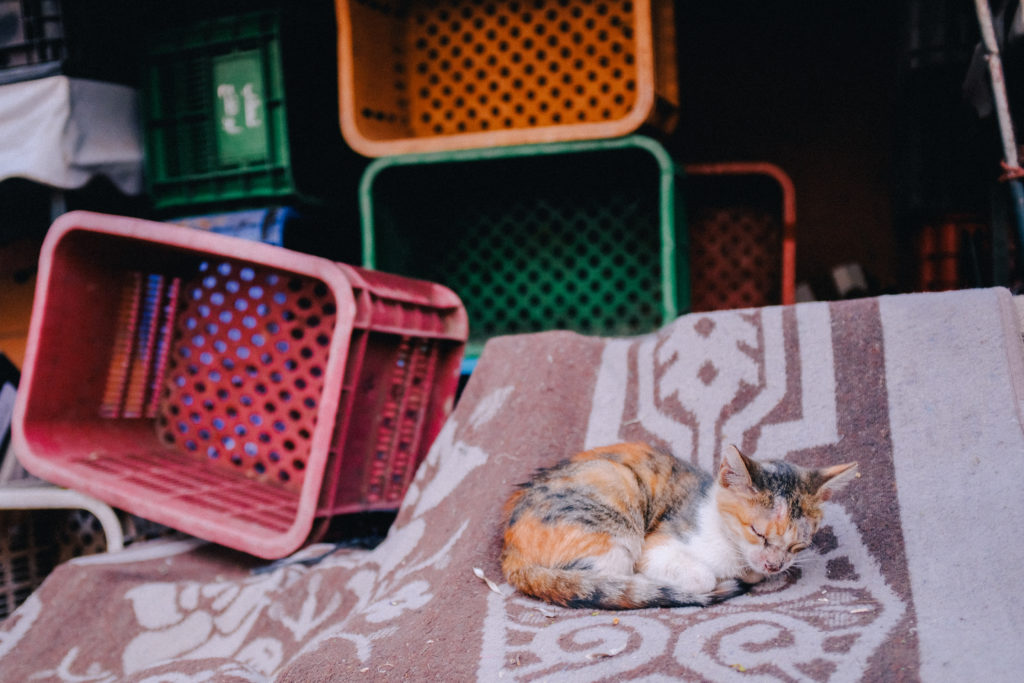
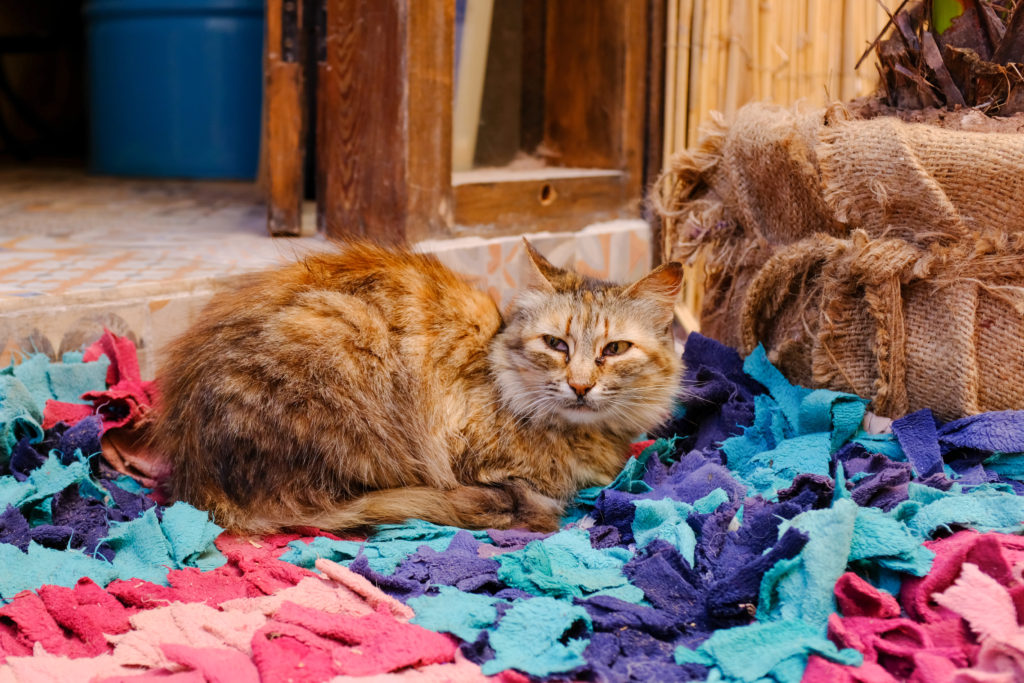
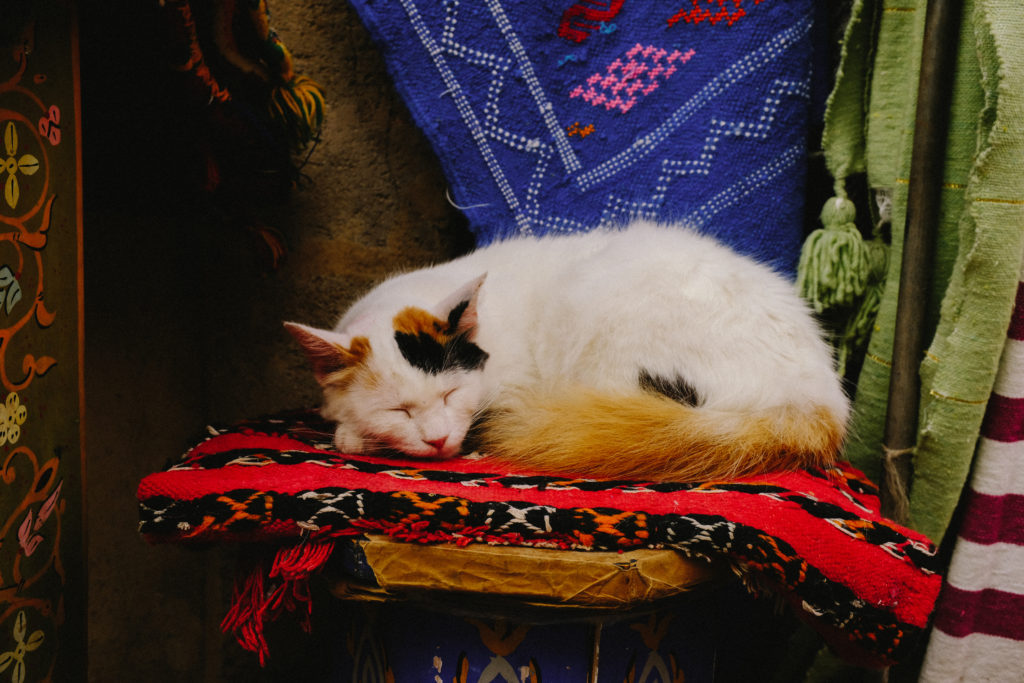
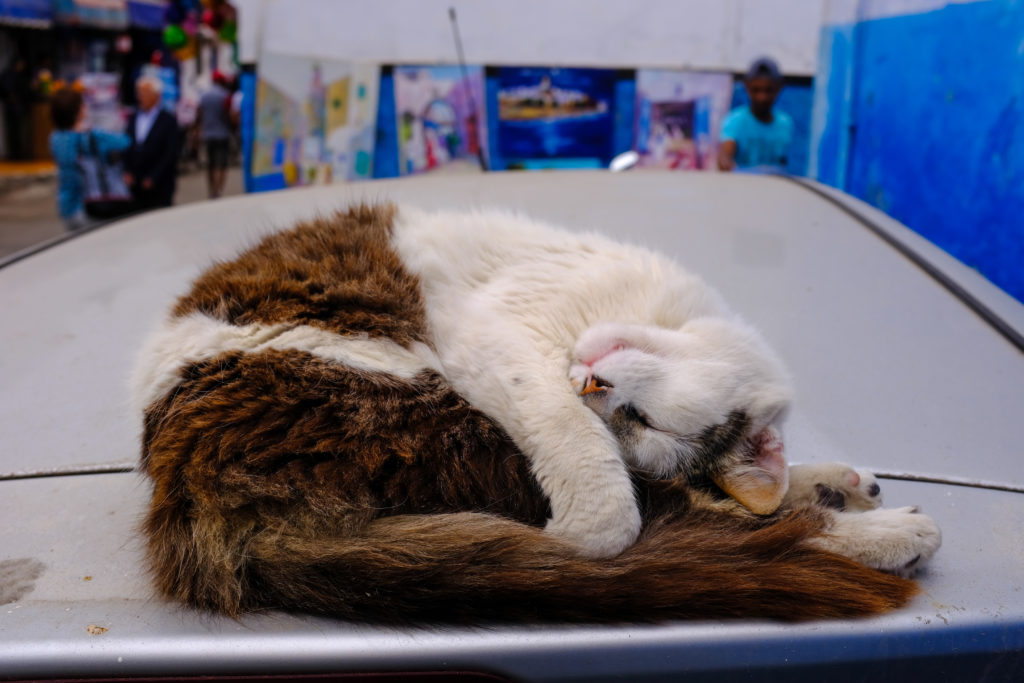
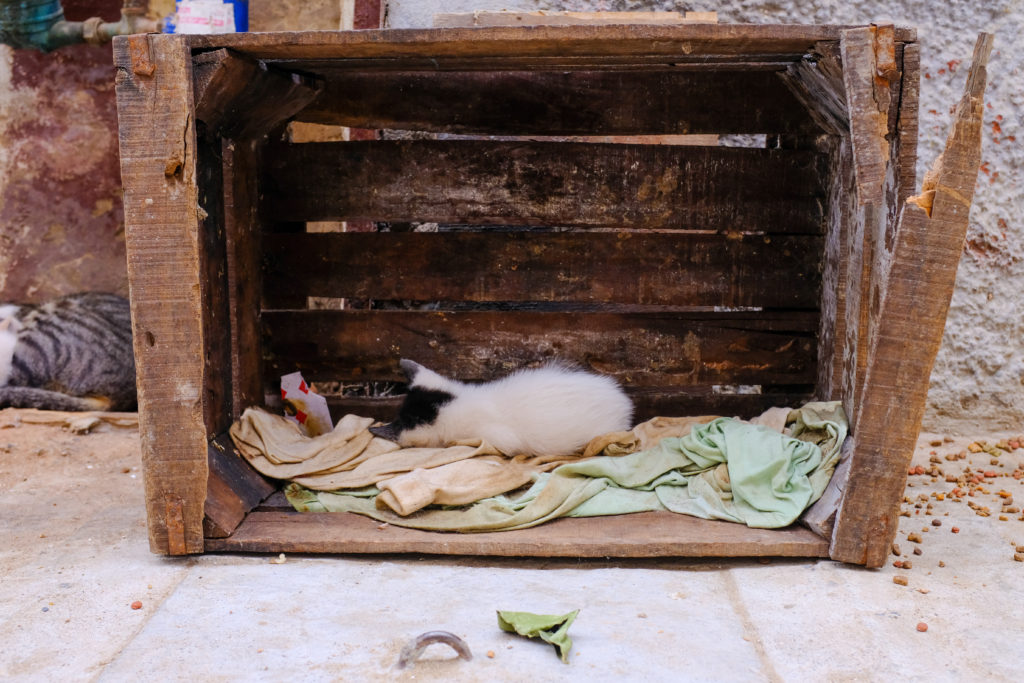
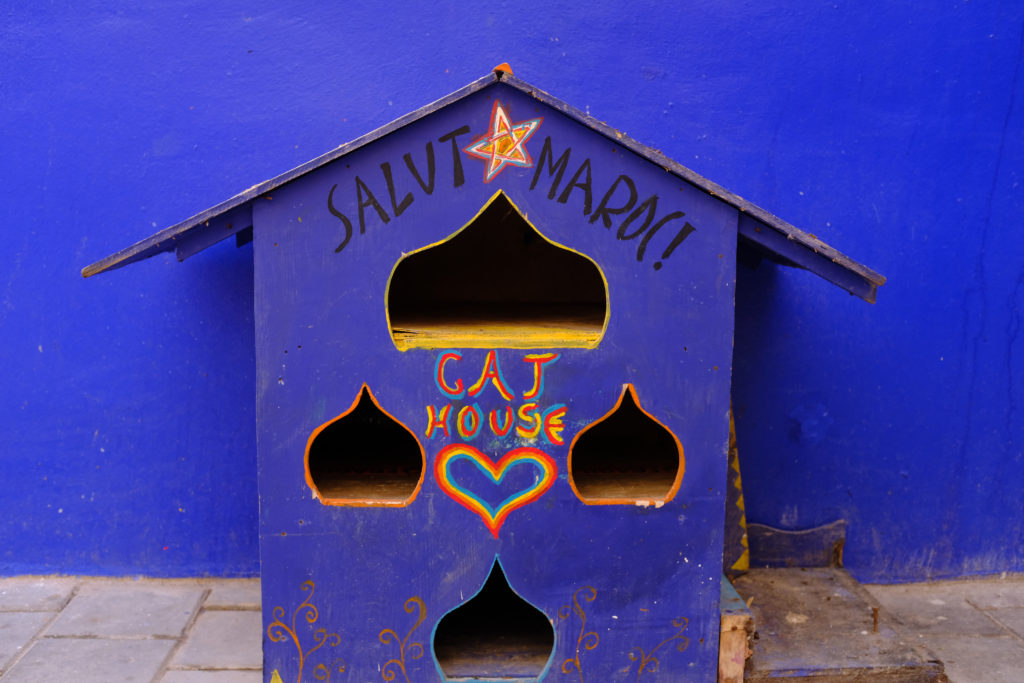
Street cats behave quite differently from domestic ones. Someone visiting from Portugal remarked to us, “The cats here act like dogs.”
These cats don’t bother to play it cool—they approach you as soon as they see you, hoping you’ll have food. They also really enjoy spraying, marking their territory with their scent.
At night, you can find them scavenging for garbage on the streets.
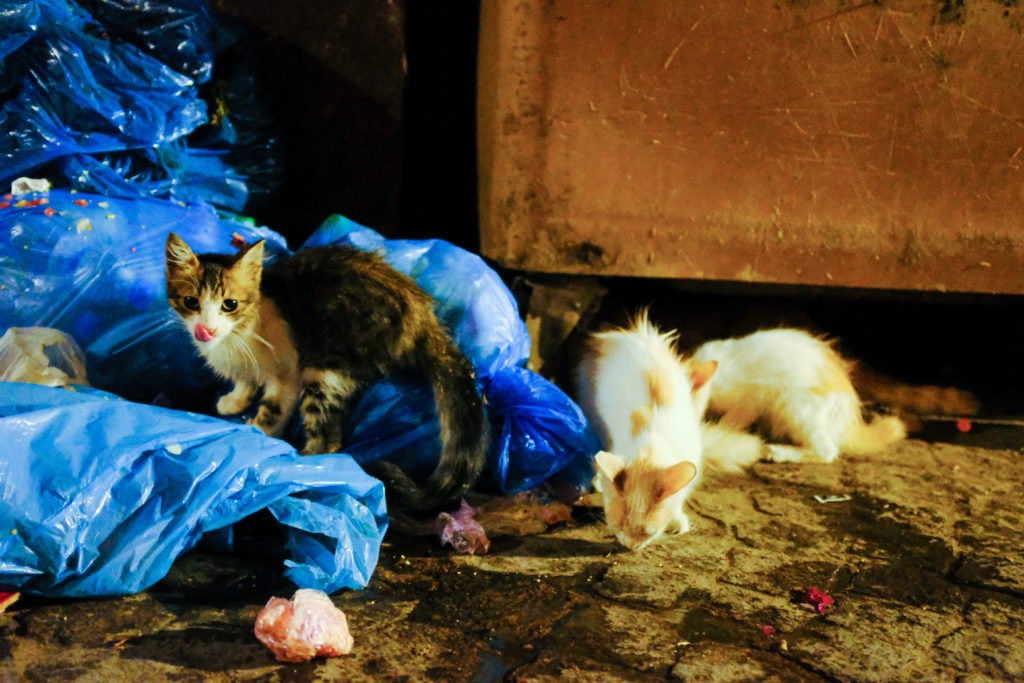
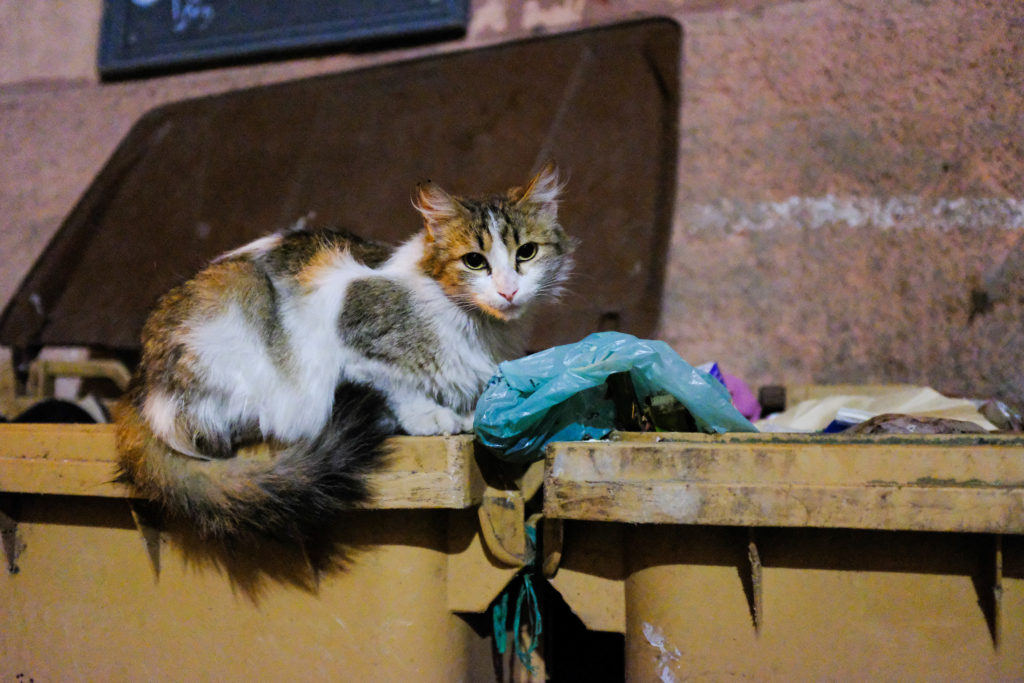
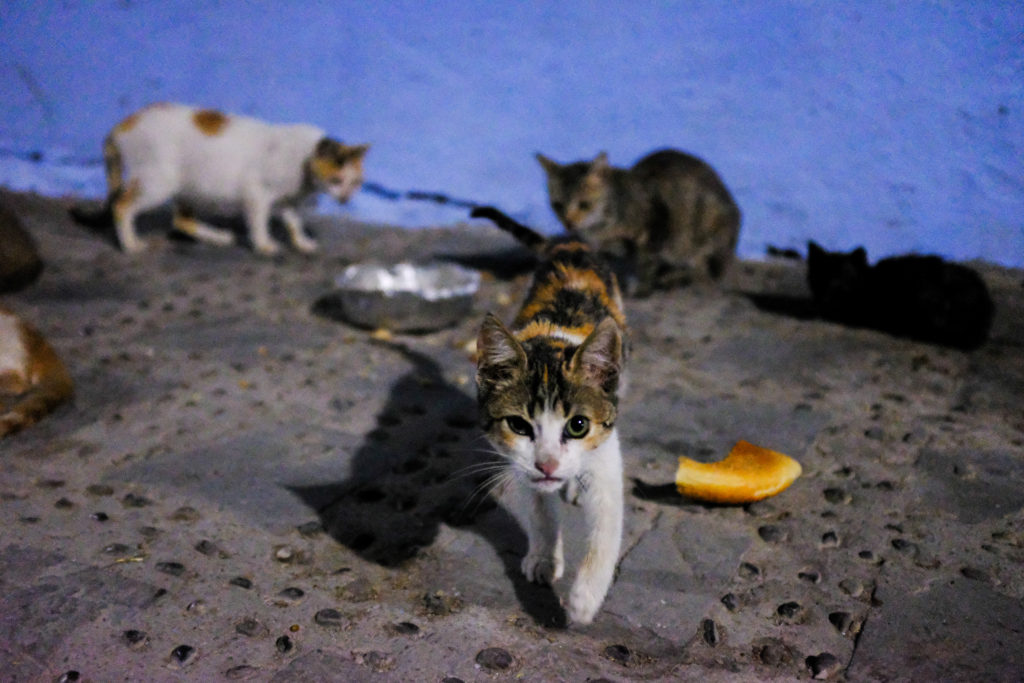
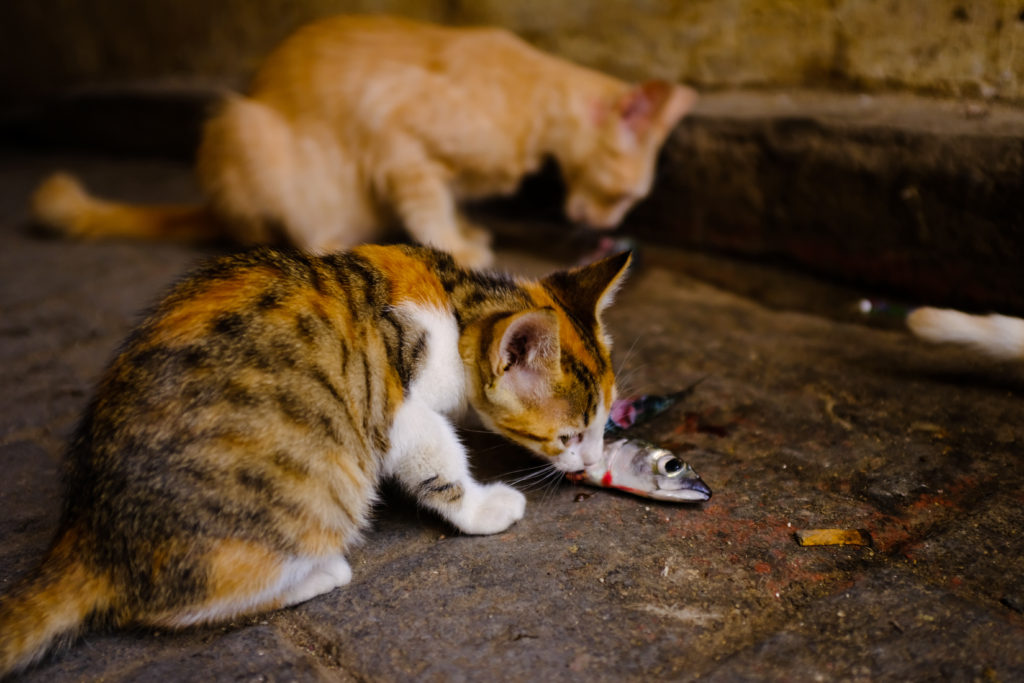
We often fell asleep to the chorus of male cats yowling and fighting; our host explained it was because we were there during mating season.
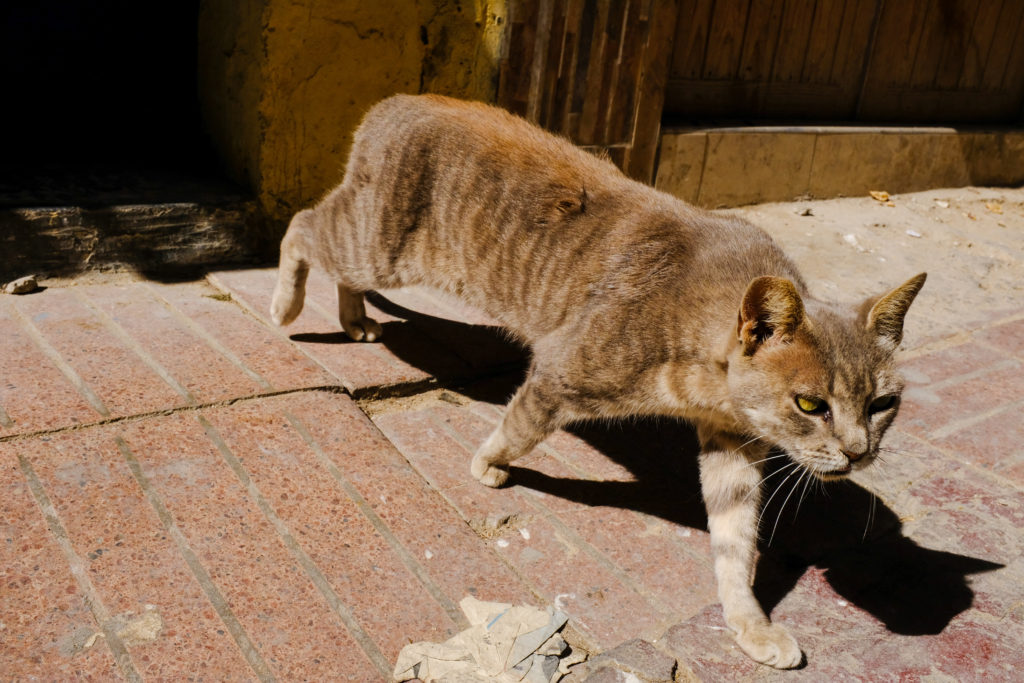
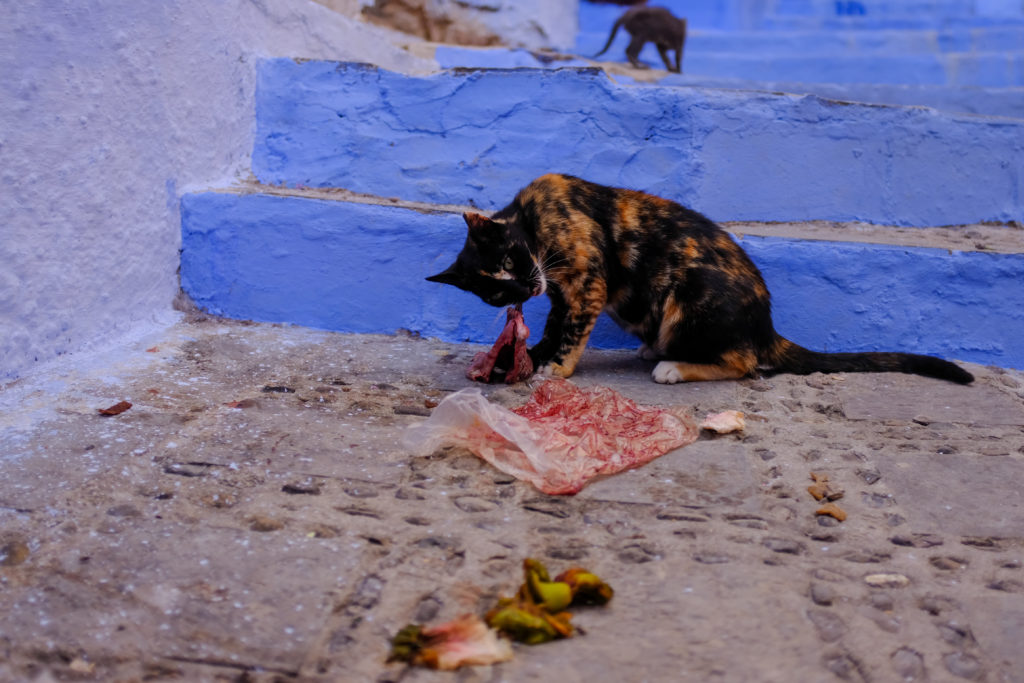
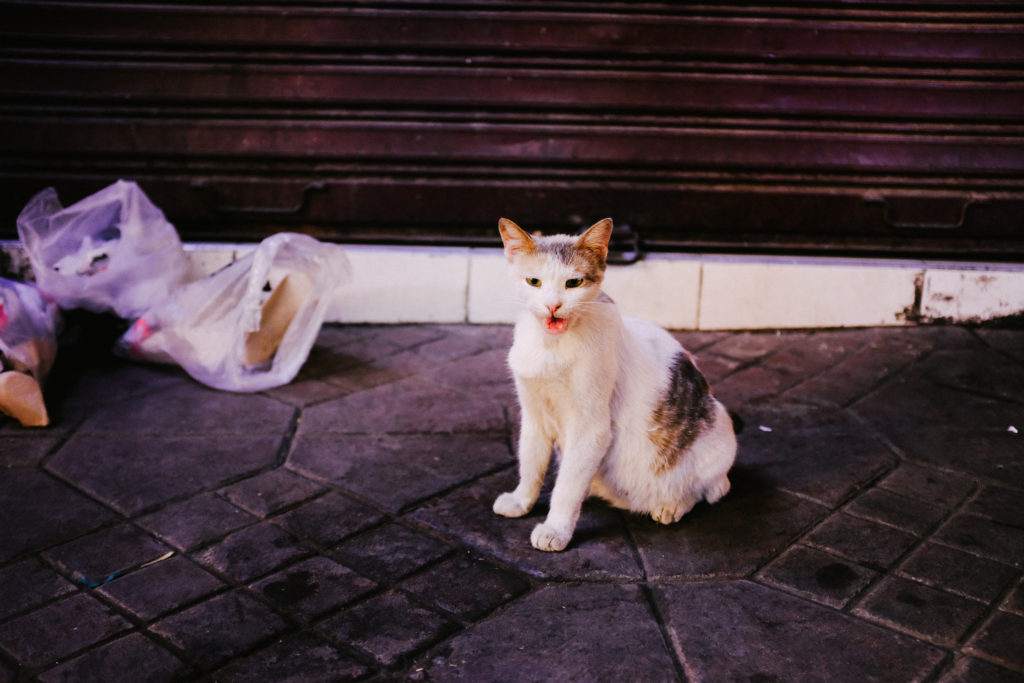
These cats are social creatures. It seems there’s an informal network of cat friends; we saw regular pairs or trios sleeping or roaming around together.
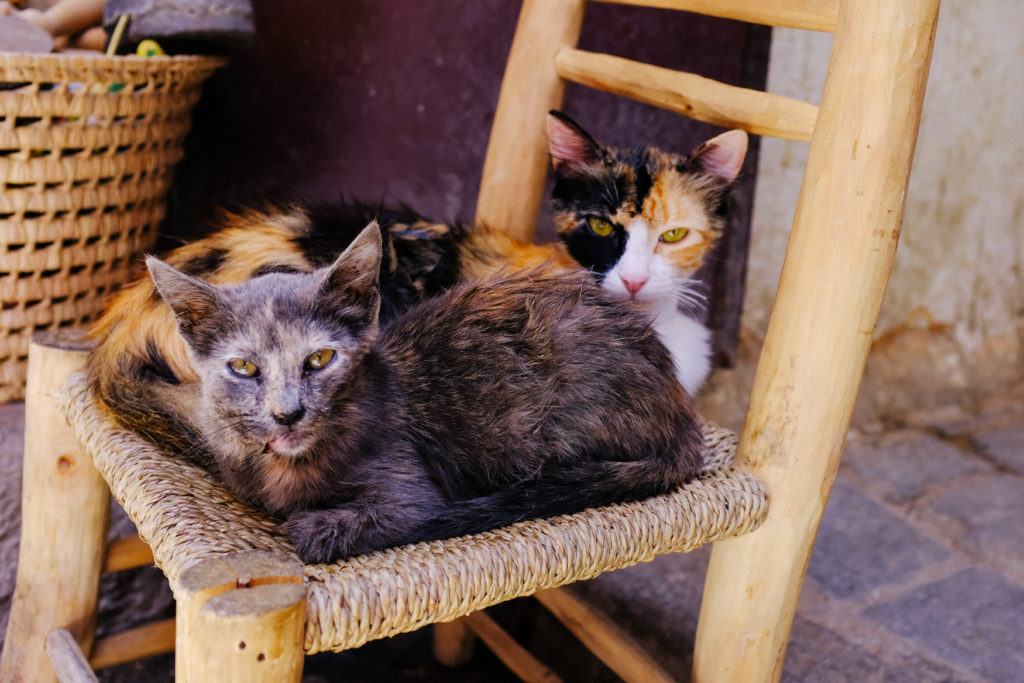
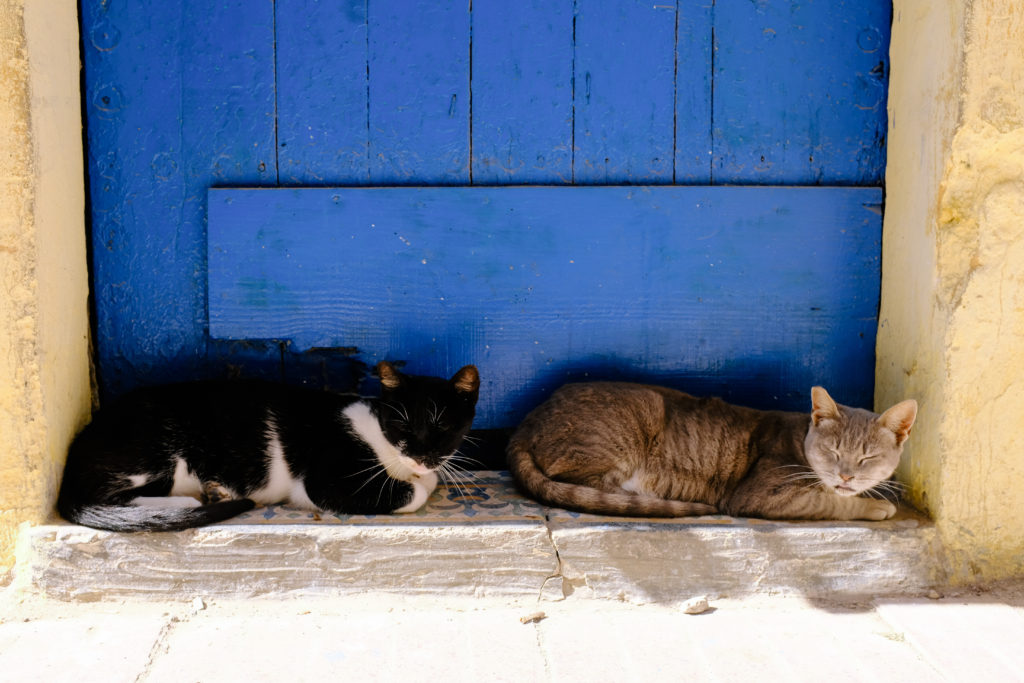
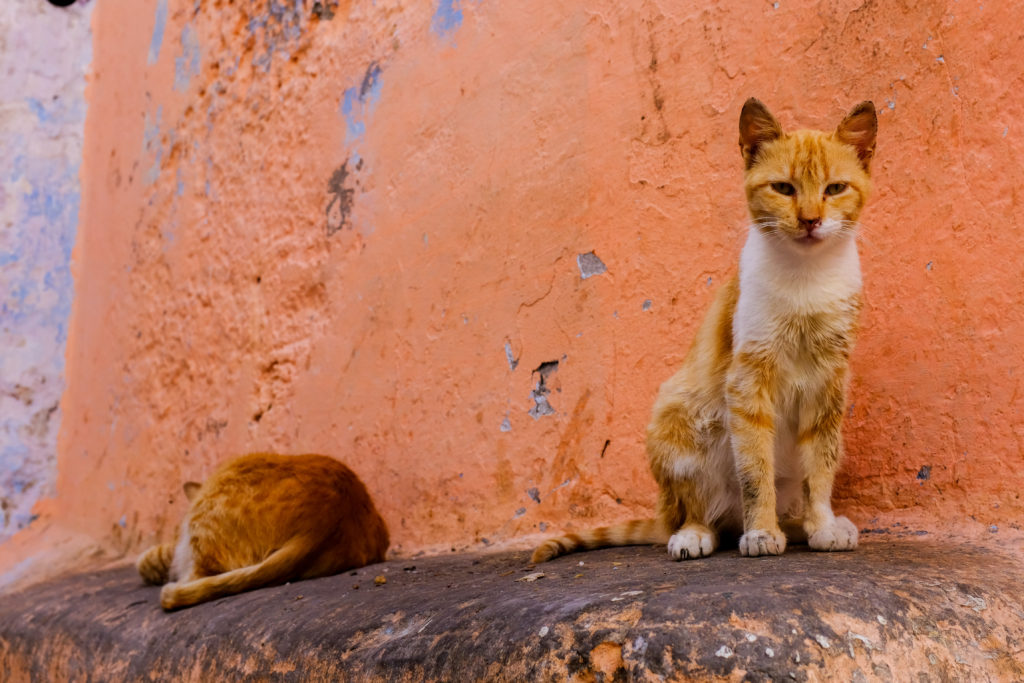
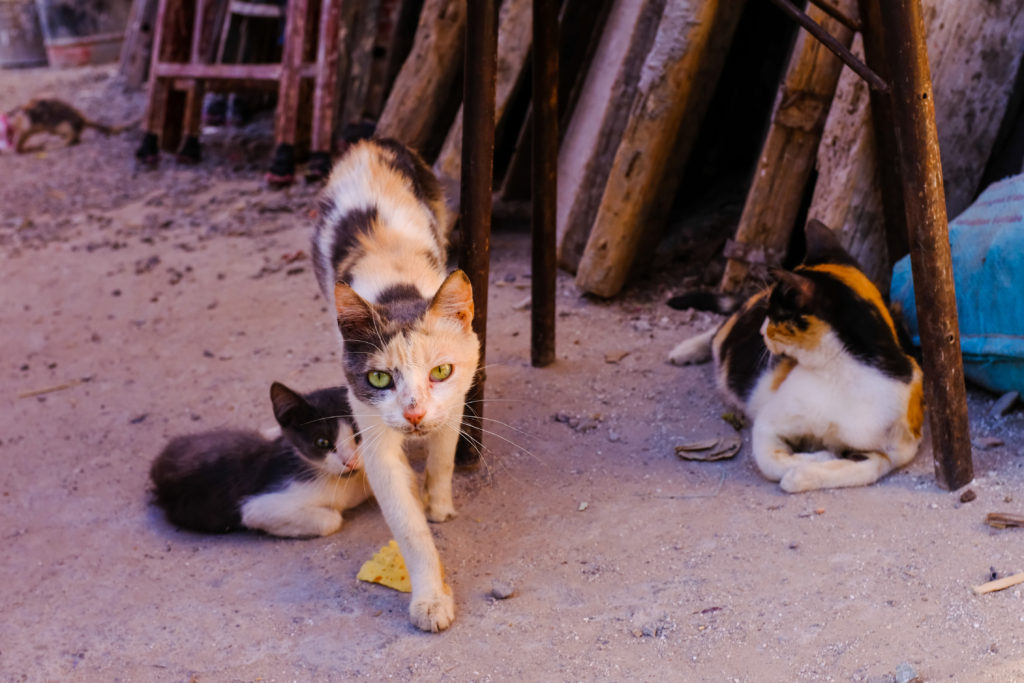
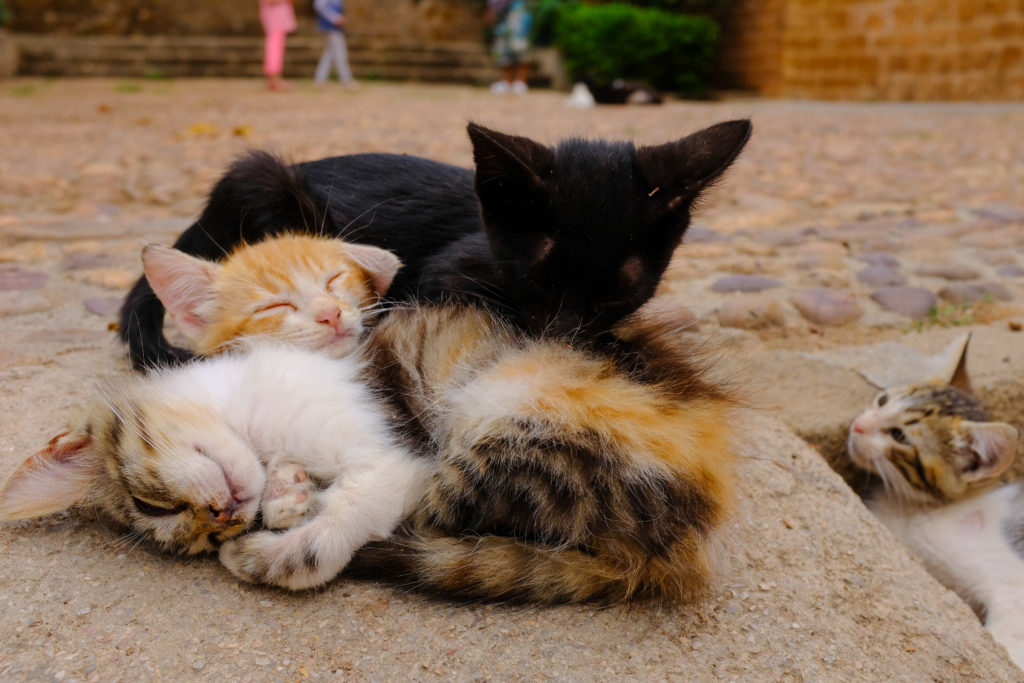
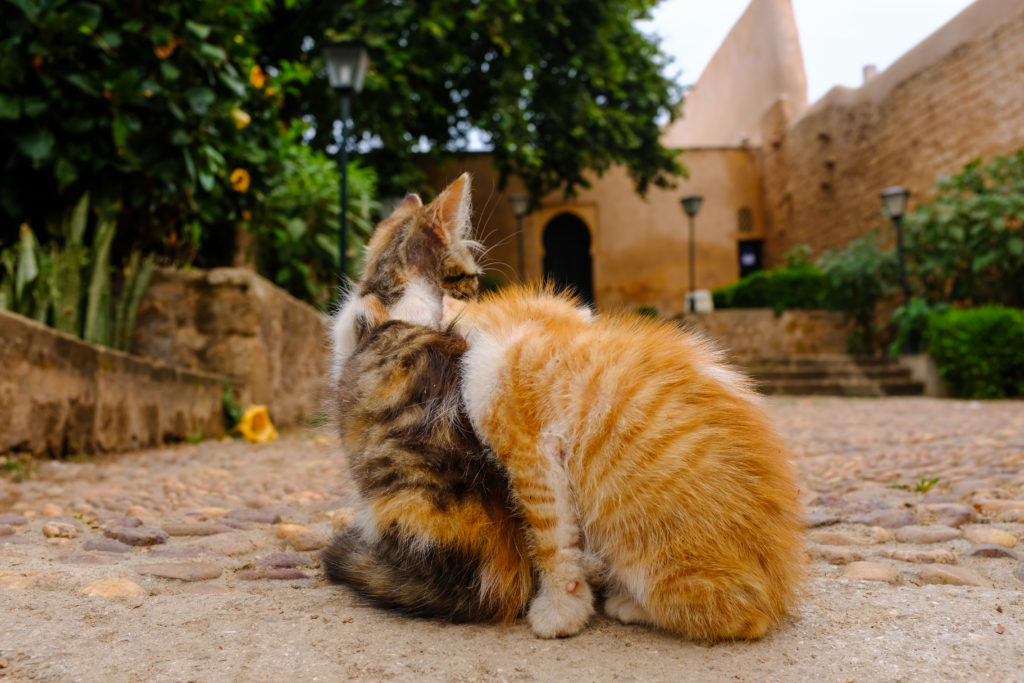
While many of them seem to receive care, there are also some disheartening scenes of sick or injured kittens. There are a few organizations, like SPANA and the Helga Heidrich Foundation, that try to support the street cats, but otherwise the locals are, as a whole, responsible for them.
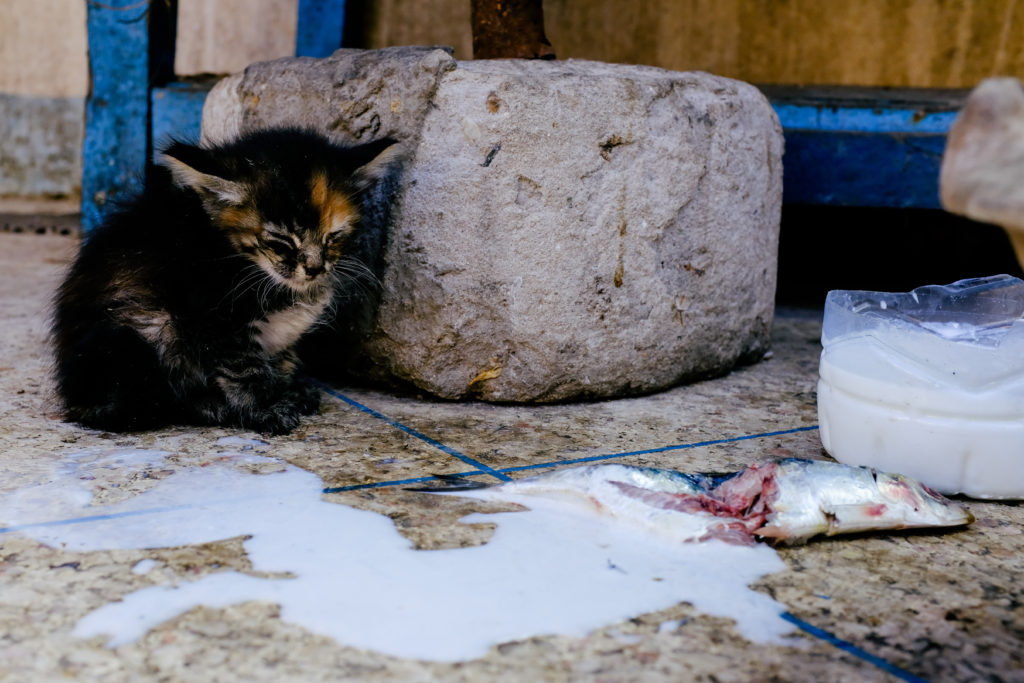
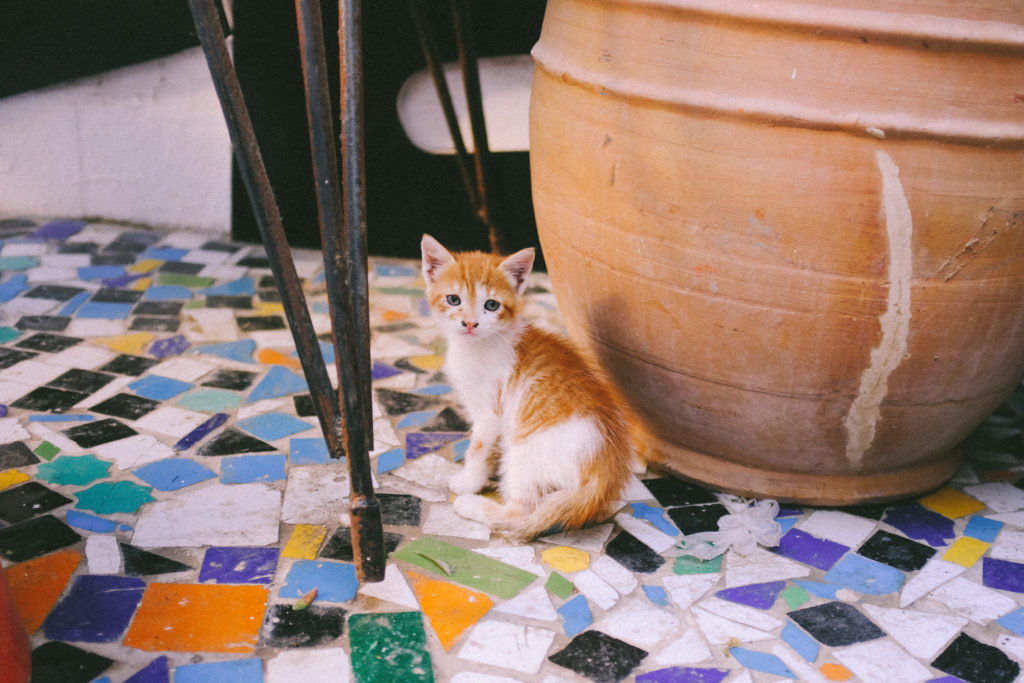
Most of the cats are quite cute, with large, round eyes. I have a theory that it’s due to survival of the fittest. When it comes to life on the streets, it’s the most attractive cats that people will want to take in or feed.
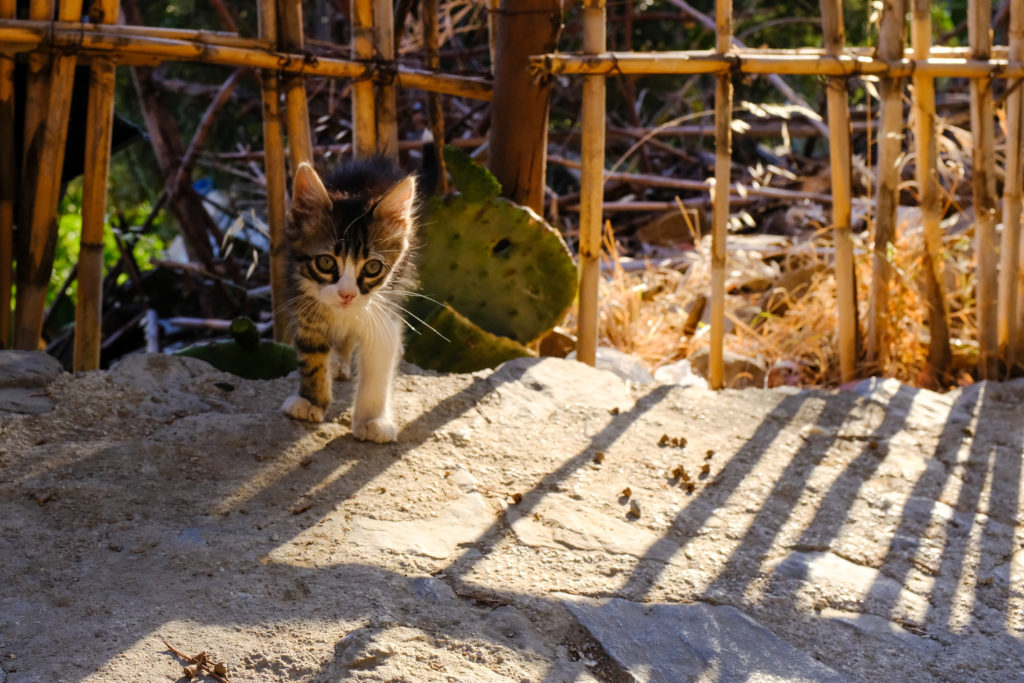
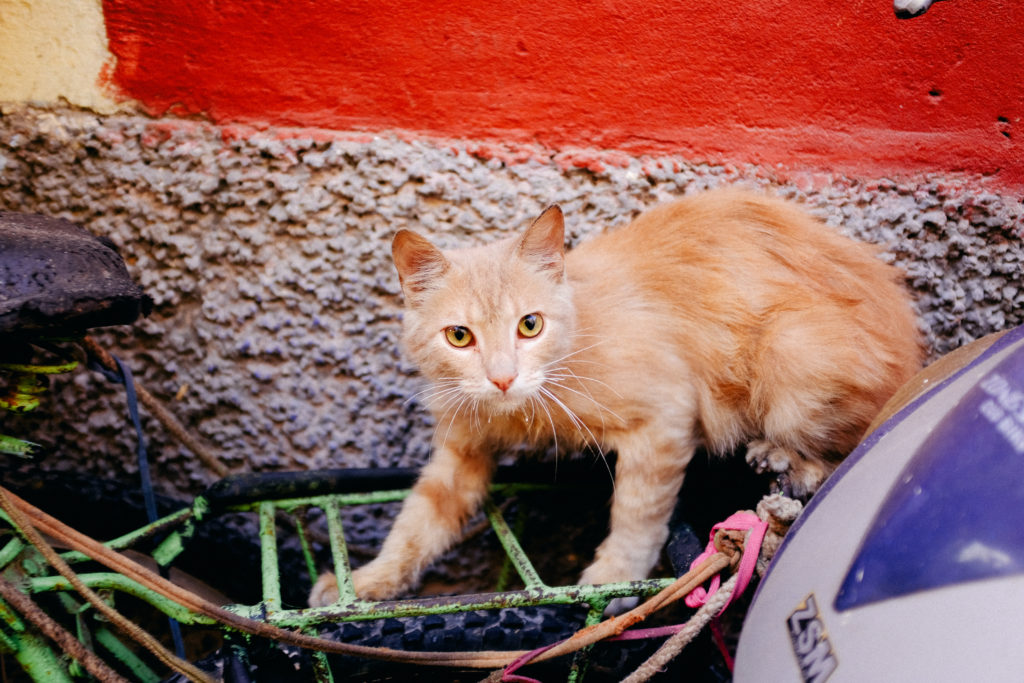
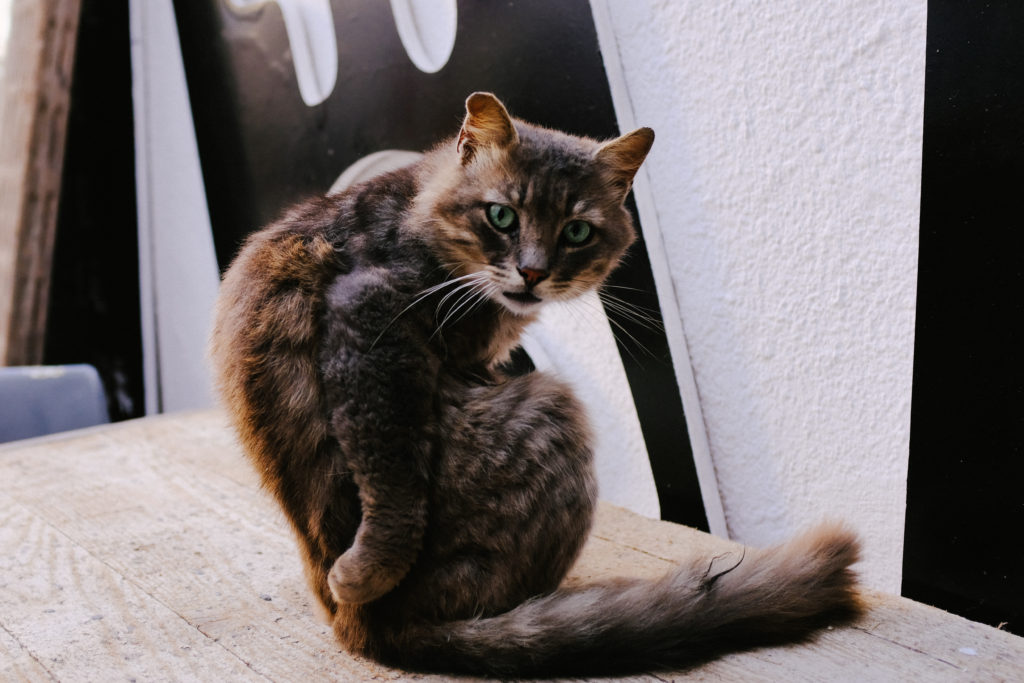
Experiencing these cats made me want to watch Kedi, a documentary about the free-roaming cats in Istanbul who wander in and out of people’s lives. It’d be interesting to compare the street cats in Turkey to the ones in Morocco.
In the meantime, I enjoyed this National Geographic article about a French couple who photographed street cats from around the world.

